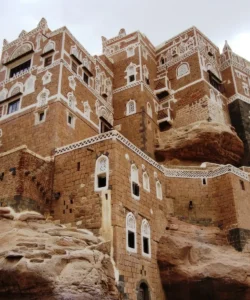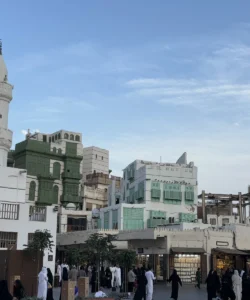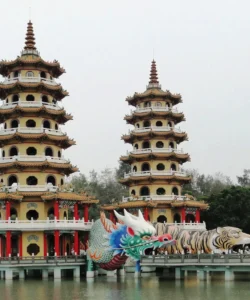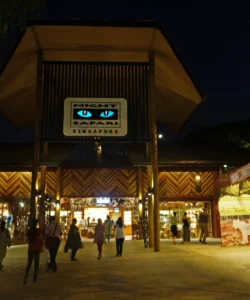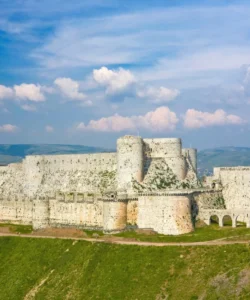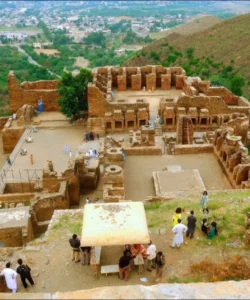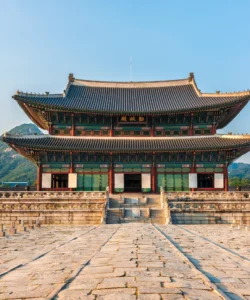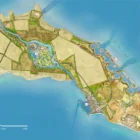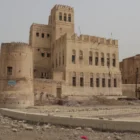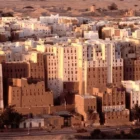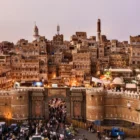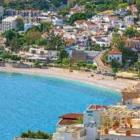Seif Palace is a significant historical and architectural landmark in Kuwait City, Kuwait. Serving as the official headquarters of the Emir of Kuwait, the Crown Prince, and the Prime Minister, it holds immense national importance. The palace showcases a blend of traditional Islamic architecture with Kuwaiti influences and is particularly known for its distinctive watchtower with a gold-plated roof.
Listen to an introduction about Seif Palace
Name and Address
- Name: Seif Palace (Arabic: قصر السيف, also spelled Sief Palace or Al-Seif Palace)
- Address: Located in Kuwait City, Kuwait, opposite the Grand Mosque.
- Location: Situated prominently on the coast of the Arabian Gulf in Kuwait City, hence its name “Al-Seif,” meaning “the sea coast” in Arabic.
How to Get There
Seif Palace is centrally located in Kuwait City and is easily accessible.
- By Car: Driving is a common way to reach the palace, and there is parking available nearby.
- Taxi/Rideshare: Taxis and rideshare services are readily available throughout Kuwait City and provide direct transportation to the palace.
- Public Transportation: Visitors can use local buses to reach areas close to the palace, followed by a short walk or taxi ride.
- Visitor Access:It’s important to note that Seif Palace is primarily a government building and is generally not open to the public for tours. While the interiors are restricted, visitors can admire the palace’s exterior and stroll through the surrounding gardens. Photography of the exterior is often permitted.
Landscape and Architecture
Seif Palace boasts a rich architectural heritage, combining historical elements with later renovations.
- Historic Origins: The original palace was built in 1880, with a major phase of construction completed in 1904 during the era of Sheikh Mubarak Al-Kabeer. Initially, it was constructed using local materials like mud, clay, rocks, limestone, wood, and metals.
- Islamic and Kuwaiti Design: The architectural design incorporates traditional Islamic characteristics, featuring intricate patterns and domes, along with touches of Kuwaiti tradition.
- Distinctive Features: One of its most famous features is the watchtower, covered in blue tiles and topped with a pure gold-plated roof. This watchtower, along with a lighthouse (replaced in 1936), historically served as a guiding landmark for sailors.
- Modern Additions and Renovations: The palace has undergone several stages of building and construction. A more modern extension, including the Amiri Diwan, Crown Prince’s Diwan, and public utility centers, features exquisite Islamic architecture adapted to the Kuwaiti environment. This section, with an overall area of 450,000 square meters, includes a dock for VIP yachts, a helipad, and an artificial lake.
- Interior (Restricted Access): While generally inaccessible to the public, historical accounts mention elaborate interiors, such as the Crown Prince Diwan’s ceiling decorated with golden, colorful patterns, hand-woven carpets, and oak-covered walls.
What Makes It Famous
Seif Palace’s fame is rooted in its historical, political, and architectural significance:
- Royal Seat: It has been the official seat of Kuwait’s government and the residence for various rulers since the late 19th century, making it a pivotal site in the country’s political history.
- Architectural Icon: Its blend of traditional and modern Islamic architecture, particularly the iconic watchtower with its gold roof, makes it a prominent and recognizable landmark in Kuwait City.
- Symbol of Sovereignty: The palace is considered a symbol of Kuwaiti monarchy and sovereignty, serving as a venue for official state functions and ceremonies.
- Historical Resilience: The palace has withstood significant events, including a fire in 1983 and destruction during the Iraqi invasion in 1990-1991. Its restoration symbolizes Kuwait’s recovery and strength.
- Coastal Significance: Its strategic location on the Arabian Gulf coast historically made it important for guiding sailors and contributes to its picturesque setting.
Differences from Some Other Landmarks
Seif Palace distinguishes itself from other Kuwaiti landmarks in several ways:
- Active Government Palace vs. Public Attractions: Unlike public attractions such as the Kuwait Towers (which offer observation decks and restaurants) or the Grand Mosque (which offers tours), Seif Palace is an active governmental complex with highly restricted public access. Its primary function is official rather than tourist-oriented.
- Historical Depth: While other modern landmarks like Al Hamra Tower showcase contemporary architectural innovation, Seif Palace has a deep historical lineage dating back to the late 19th century, having witnessed and played a role in many pivotal moments in Kuwaiti history.
- Architectural Evolution: It represents an evolution of architectural styles, from its initial construction with traditional materials to its modern extensions, offering a unique blend that differs from landmarks built in a singular architectural period.
- Symbolic Function: While many landmarks are symbols of progress or culture, Seif Palace’s direct association with the ruling family and state functions gives it a unique symbolic weight as the heart of Kuwait’s governance.
Seif Palace Photos:





























